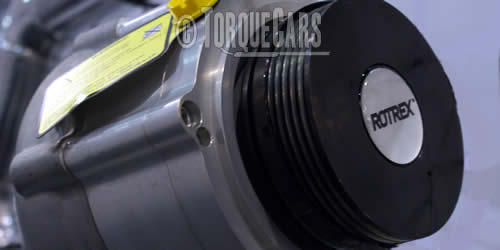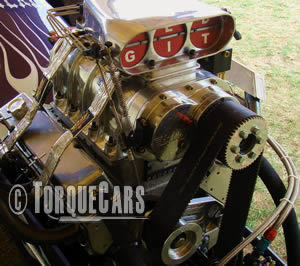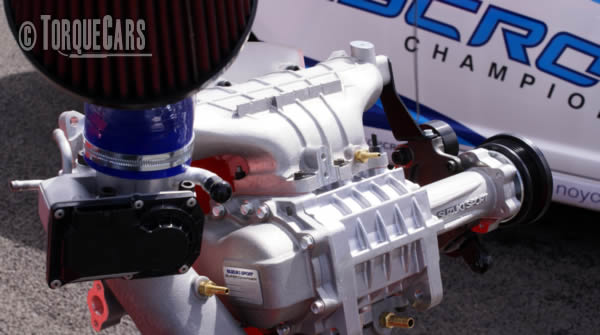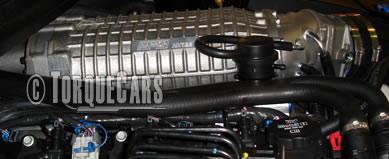Adding a supercharger - the advantages and disadvantages.
"SuperCharge me."
Superchargers offer the promise of substantial power gains with very few drawbacks. So lets look at the growing popularity of supercharger kits and see what its all about.
A supercharger is quite simply an air compressor which helps push more air into an engine.
These are driven by a belt from the engine effectively creating pull on the engine sapping up to 30% of the engines power.

For this reason superchargers are not as efficient as turbo chargers, which are driven from 'spare' energy taken from waste exhaust gases.
The big advantage for superchargers is that they produce additional power from much lower engine speeds and do not suffer from the inherent lag of turbos.
There are two main types of supercharger, a positive displacement supercharger, which gives a fairly constant level of boost making tuning a much simpler process, and dynamic compressors, which provide boost in proportion to the engines speed.
It is better to fit a supercharger to a Naturally aspirated engine than going for a turbo because you will have much more control over the power and it will be delivered in a more consistent manner establishing a good base for ECU tuning to take full advantage of the power.
 If adding forced induction to a standard naturally aspirated engine, a word of caution about engine knock.
If adding forced induction to a standard naturally aspirated engine, a word of caution about engine knock.
This is where pressure in the engine causes the air/fuel to prematurely ignite causing extensive engine damage.
Just as with a turbo you would need to lower the compression ratio of the engine in relation to the amount of boost you are putting into the engine.
Ideally you want to lower the compression of an engine to around 8:1 to allow a reasonable level of boost, although this varies from application to application and with water injection this can be safely exceeded. Using higher octane fuel will also help to reduce the risk of detonation.
Typically superchargers are more expensive to make than turbo chargers. As demand increases these costs will eventually come down to affordable levels and after market kits will be available for most popular engines.

The other advantage of a supercharger is that the charge temperature is substantially lower than an equivalent turbo application and cooler air carries more oxygen which means more fuel can be burned therefore releasing more power.
Any form of compression of air creates a temperature rise so an intercooler is still a good idea on a supercharged engine. You will also need to uprate your fuelling.
Manufacturers are now producing dual forced induction systems. These give a good compromise between low down boost and top end power. Offerings such as Volkswagens 1.4 twincharger engine can produce a massive 168hp and 177 lb-ft torque, and still return fuel consumption around 40mpg. A smaller engine is also lighter and smaller so fairly small cars can be fitted with these engines and offer very good performance.
 As modern engines are so well built there is a lot of scope for the addition of forced air induction without dramatically impairing reliability.
As modern engines are so well built there is a lot of scope for the addition of forced air induction without dramatically impairing reliability.
The supercharger is also an easier bolt on upgrade when compared with a turbo.
There are also some interesting projects around where superchargers are being added to turbo engined cars to provide the best of both worlds.
Join us in our forum to see which mods our members rate and swap ideas and plans for your tuning project. TorqueCars are a friendly forum and all makes and models, and all levels of technical ability are welcome. Join here.
If you liked this page please share it with your friends, drop a link to it in your favourite forum or use the bookmarking options to save it to your social media profile.
Check out TorqueCars new YouTube channel, and see their awesome new content...
Feedback
Please use our forums if you wish to ask a tuning question, and please note we do not sell parts or services, we are just an online magazine.
Help us improve, leave a suggestion or tip
